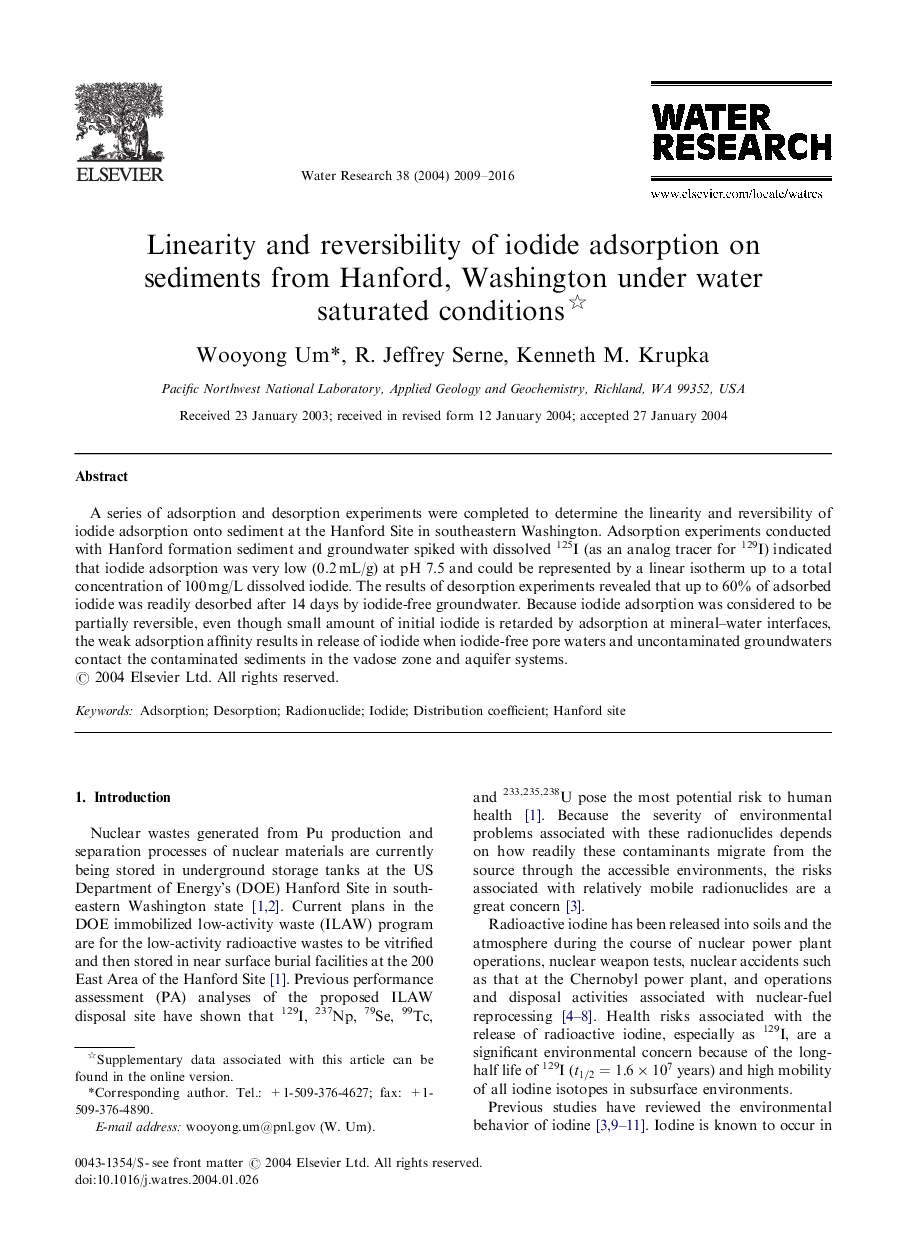| کد مقاله | کد نشریه | سال انتشار | مقاله انگلیسی | نسخه تمام متن |
|---|---|---|---|---|
| 4487157 | 1317017 | 2016 | 8 صفحه PDF | دانلود رایگان |
A series of adsorption and desorption experiments were completed to determine the linearity and reversibility of iodide adsorption onto sediment at the Hanford Site in southeastern Washington. Adsorption experiments conducted with Hanford formation sediment and groundwater spiked with dissolved 125I (as an analog tracer for 129I) indicated that iodide adsorption was very low (0.2 mL/g) at pH 7.5 and could be represented by a linear isotherm up to a total concentration of 100 mg/L dissolved iodide. The results of desorption experiments revealed that up to 60% of adsorbed iodide was readily desorbed after 14 days by iodide-free groundwater. Because iodide adsorption was considered to be partially reversible, even though small amount of initial iodide is retarded by adsorption at mineral–water interfaces, the weak adsorption affinity results in release of iodide when iodide-free pore waters and uncontaminated groundwaters contact the contaminated sediments in the vadose zone and aquifer systems.
Journal: Water Research - Volume 38, Issue 8, April 2004, Pages 2009–2016
